 |
 |
 |
| |
Sustained viral suppression with dolutegravir and boosted darunavir dual therapy among highly treatment-experienced individuals.
Sustained Viral Suppression After Switch to Darunavir/Dolutegravir
|
| |
| |
IDWeek 2018, October 3-7, 2018, San Francisco
Mark Mascolini
Almost everyone (98%) switching to dolutegravir (DTG) plus boosted darunavir (bDRV) in a 65-person retrospective Denver study attained viral suppression, and 95% maintained suppression after a median of 419 days [1].
Initial and later 2-drug antiretroviral regimens are gaining popularity because of their simplicity and demonstrated potency and safety in clinical trials. Department of Health and Human Services (DHHS) adult antiretroviral guidelines now recommend a boosted protease inhibitor plus an integrase inhibitor in certain people with virologic failure. One such combination that has not been well-studied, bDRV plus DTG, has theoretical promise because of its high barrier to resistance and good safety profile. Researchers at Denver Public Health retrospectively analyzed response to bDRV/DTG in adults switching from other regimens.
The analysis involved all antiretroviral-experienced adults who had ever taken bDRV/DTG between January 2013 and December 2017 at the 2 largest HIV clinics in Denver. Researchers excluded people with no follow-up viral loads or with a last recorded viral load within 8 weeks of starting bDRV/DTG. They excluded people who did not use clinic pharmacies from the adherence analysis. Follow-up extended from the day the regimen began to the last viral load measure during bDRV/DTG therapy. Researchers calculated adherence by the medication possession ratio, which equals the number of days pills are dispensed divided by the number of days adherence is measured.
The 65 people studied included 49 with an initial viral load below 200 copies and 16 with an initial load above 200 copies. The whole group had a median age of 55 years (interquartile range [IQR] 51 to 61), and 9 participants (14%) were women. While 48% were white, 28% were Hispanic and 23% black. Median initial CD4 count measured 527 (IQR 340 to 767). Participants had taken antiretrovirals for a median of 19 years (IQR 13 to 22). Large majorities had taken a protease inhibitor (89%) or a nonnucleoside (85%), and 57% had taken an integrase inhibitor.
The researchers identified 3 reasons for switching to bDRV/DTG: (1) suspected resistance to tenofovir, (2) tenofovir toxicity or intolerance and need to avoid abacavir because of resistance, abacavir reaction, or intolerance, and (3) chronic kidney disease and desire to avoid abacavir. Thirty-three people boosted DRV with cobicistat and 32 with ritonavir. Fifty-nine people took the regimen once daily, 5 took bDRV twice daily, and 1 took both drugs twice daily. Overall pharmacy-calculated adherence was 100%.
Median follow-up stood at 419 days overall, 415 days in the 49 people with initial viral suppression, and 511 days in the 16 people without initial suppression. Among the 49 people with viral suppression when switching to bDRV/DTG, 1 had blipped above 200 copies during weeks 8 to 20 on bDRV/DTG. That person regained viral suppression and all maintained a load below 200 copies throughout the rest of follow-up. Among the 16 people with a viral load above 200 copies when switching to bDRV/DTG, 13 (81%) had a viral load below 200 copies on their last test, and 13 (81%) had a load below 50 copies.
People with a sub-200 viral load when switching to bDRV/DTG were significantly more likely than people with an initial higher load to have a load below 200 copies at the end of the study (100% versus 81%, P = 0.01). Use of ritonavir versus cobicistat, once- versus twice-daily dosing, and preexisting resistance mutations did not affect outcomes. Median CD4 count rose from 527 to 585 during follow-up.
Ten of 65 people (15%) stopped bDRV/DTG during follow-up, 5 because of drug-drug interactions with the boosting agent, 2 because of cardiovascular risk and a desire to avoid DRV, and 1 each because of low-level viremia (112 copies), dropping out of care, and transition to a hospice for non-HIV reasons.
The Denver team concluded that dual therapy with bDRV/DTG provides sustained viral suppression even in people switching from a failing regimen. The researchers did not report safety or tolerability data.
Reference
1. Hawkins K, Montague B, Rowan S, et al. Sustained viral suppression with dolutegravir and boosted darunavir dual therapy among highly treatment-experienced individuals. IDWeek 2018, October 3-7, 2018, San Francisco. Abstract 1766.
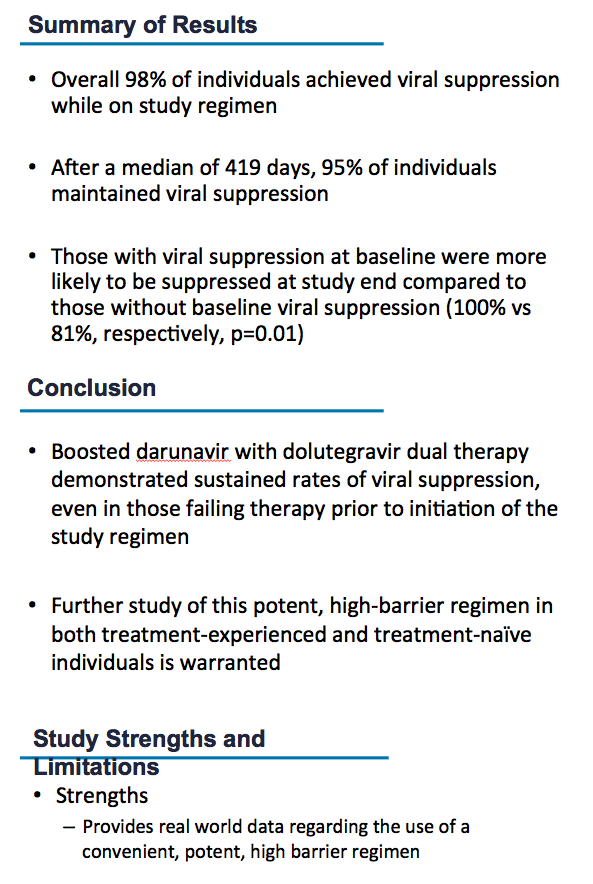
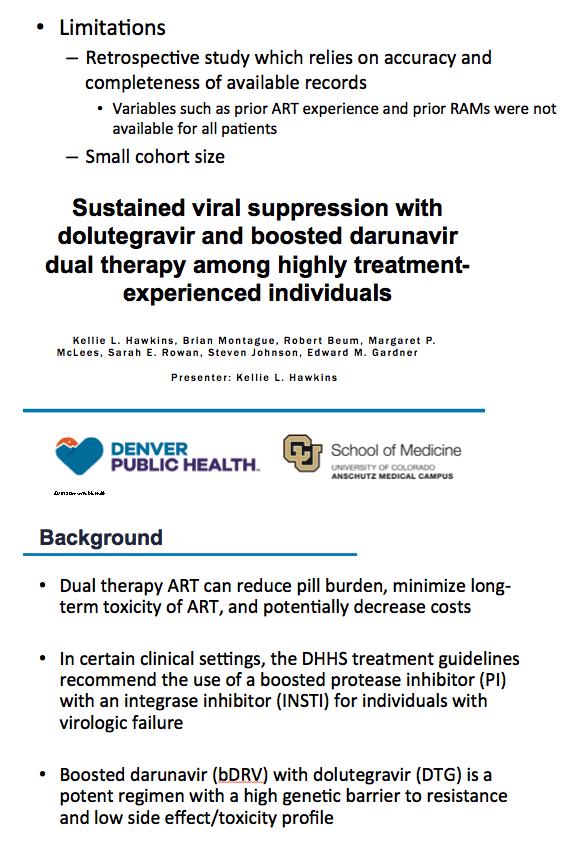
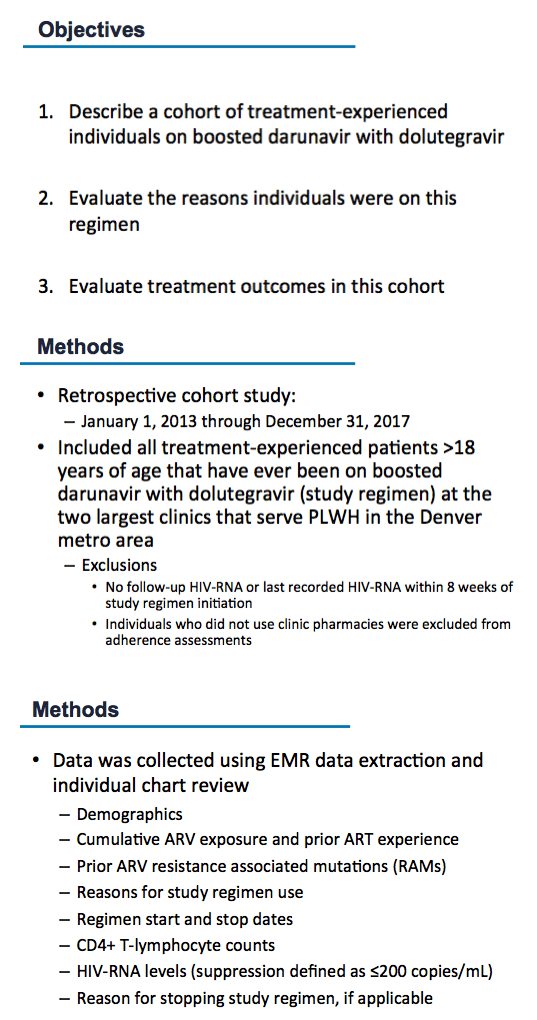
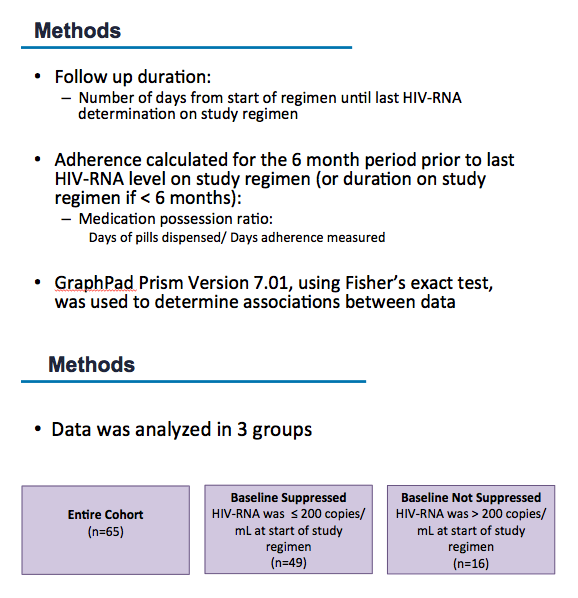
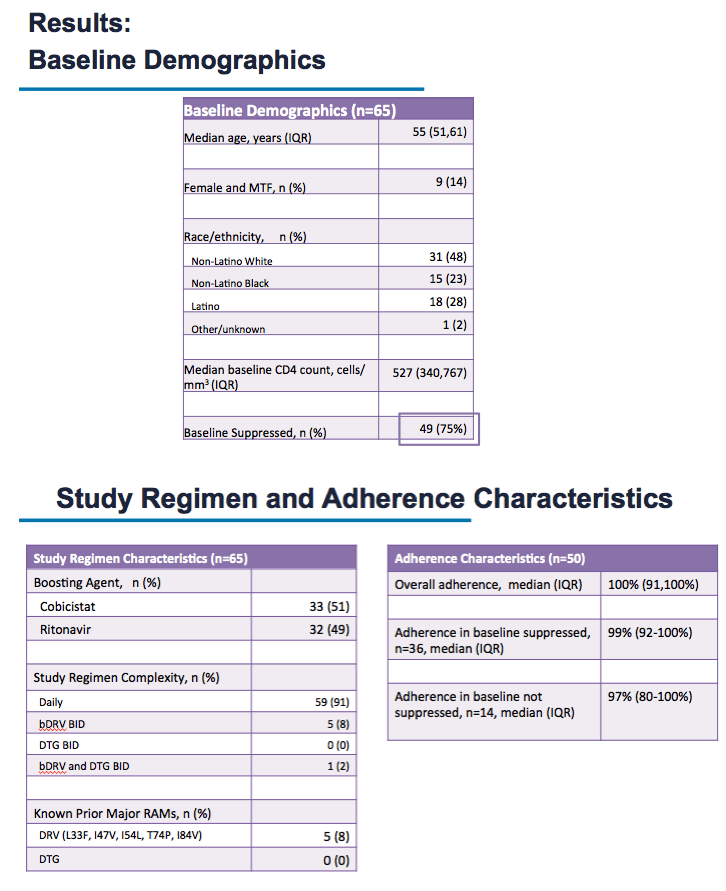
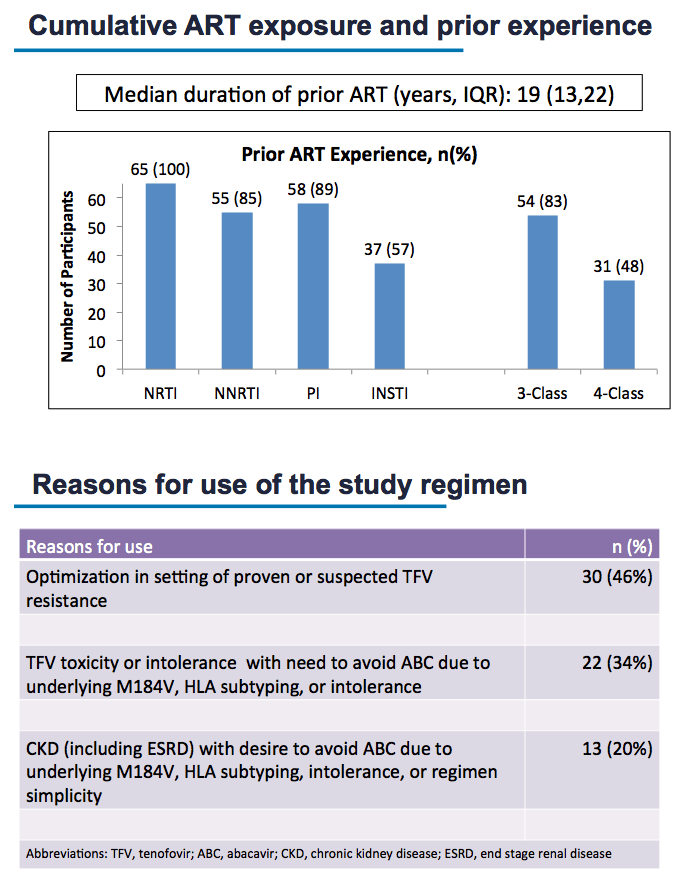
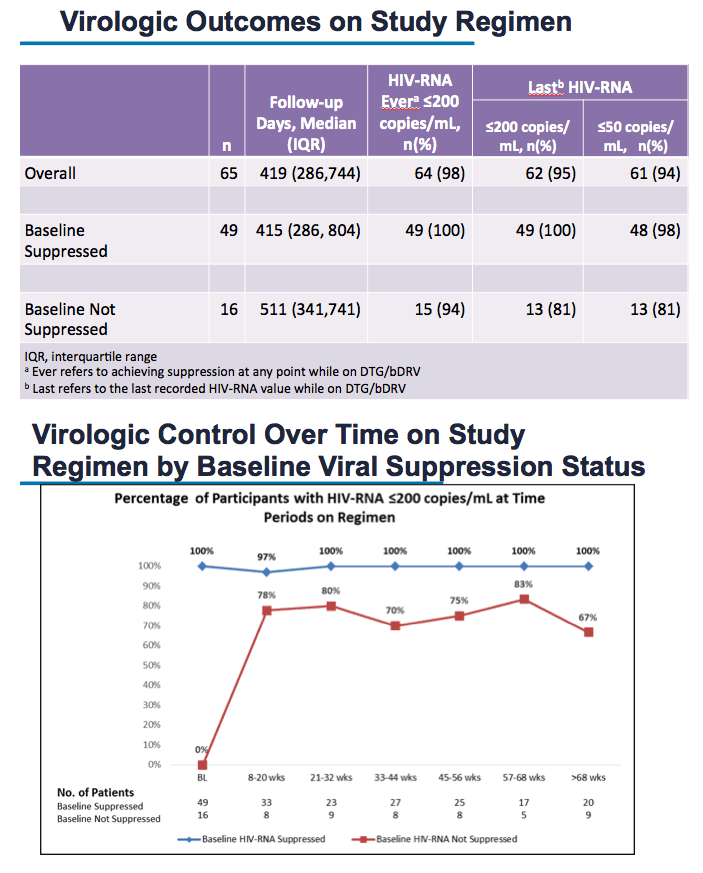
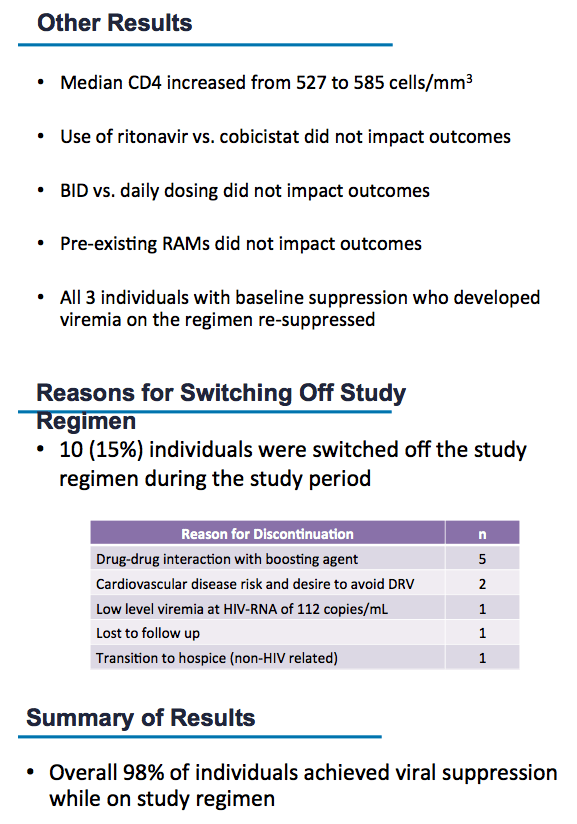
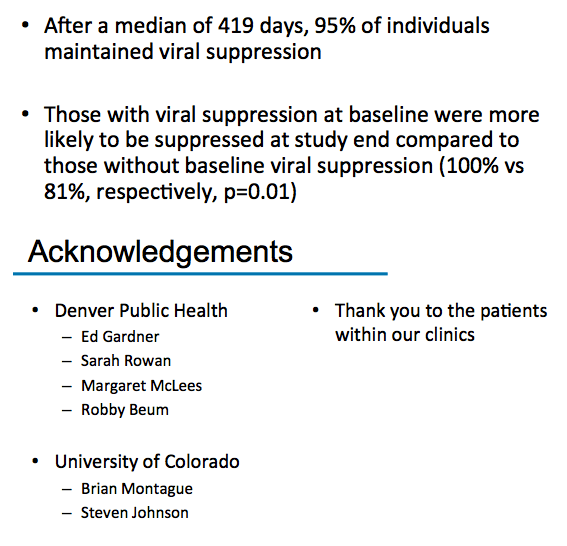
|
| |
|
 |
 |
|
|